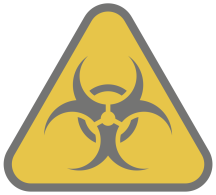Why don’t archaea cause disease?
Posted on August 11, 2017 by Dr James Chong
Are there really no archaeal pathogens? And if not, why not? Dr James Chong explores these questions in a film and article for Microbiology Today.
For a microbe, pathogenesis is a fundamentally bad idea. From an anthropomorphic point of view, why would you kill the host that is providing you with food and board at no cost? Is this not a poorly thought-through error of judgement? Surely a much better approach to propagation of one’s progeny is to hide in a corner and hope you’re not noticed? By minimising the burden on your host – or, better yet, offering them some service – they are more likely to tolerate, or even encourage, your presence.

This approach is taken by many bacteria – providing increasedmetabolic capacity (the ability to digest, convert or produce molecules of interest) for a host makes a prokaryotic guest a more attractive proposition. Therefore, bacterial disease must occur mainly through opportunity and competition: bacteria enter their host through a compromised barrier and then (inappropriately) employ mechanisms to compete for resources (production of siderophores to sequester iron, release of toxic molecules) or cause physical damage to host cells by proliferating in tissues.
To date, the predominant archaea detected in humans (and other animals) are methanogens. Human-indigenous methanogenic species have been hard to detect, requiring specific protocols todisrupt their cell walls for DNA extraction. Do they offer their hosts a metabolic advantage? Hydrogenotrophic methanogens, which reduce carbon dioxide with hydrogen to produce methane, compete with faster-growing, sulfate-reducing bacteria for hydrogen. The presence of methane rather than highly reactive, DNA-damaging hydrogen sulfide in the gut is likely indirectly protective against intestinal disorders such as ulcerative colitis and colorectal cancer. The recently described Methanomassiliicoccales potentially detoxify methanol produced by other gut residents via hydrogen reduction to methane. Acetoclastic methanogens may reduce obesity through the consumption of acetate that would otherwise be used by their hosts. So, archaea may be welcome guests, but do they ever exhibit antisocial behaviour?

The evidence is growing that archaea may indulge in opportunistic pathogenesis: Methanobrevibacter smithii, apparently the most abundant methanogen in human guts, has been reported to be found more often in stool samples from patients with diverticulosis than healthy individuals. The non-acetoclastic M. smithii has also been reported to increase obesity in germ-free mouse models when grown syntrophically with Bacteroides thetaiotaomicron. Methanobrevibacter oralis is found in and around the gums of about 5% of healthy subjects but up to 10 times more frequently in patients exhibiting periodontitis symptoms.
Recently, this same organism was found in 40% of human brain abscesses but only 10% of controls. Injection of a million M. oralis cells into the brains of 22 mice resulted in 77% mortality after seven days, compared to no deaths in the 14 buffer-injected controls. Of course, the injection of a million live cells of almost any microbial species into a mouse’s brain seems likely to cause problems, but methanogens appear to be no different. While these studies have been relatively small scale and none of them have the 100% statistics we would like to satisfy Koch’s postulates, bacteria are often in the same position.

Meningitis can be caused by both viruses and bacteria – even bacterial meningitis is caused by different organisms. In the USA, bacterial meningitis cases can generally be attributed as about 45% Haemophilus influenzae, and roughly 16% each Neisseria meningitidis and Streptococcus pneumoniae (with proportions of the latter two species varying by season). This leaves nearly 20% of cases that could be caused by different organisms. No one questions that any of these organisms are pathogenic.
Why has it been so difficult to convincingly demonstrate archaeal pathogenesis? Our ability to detect archaea has certainly been an obstacle. Improved DNA extraction methods have demonstrated that methanogens are more common in the human gut than previously suspected. The recent description of new, uncultivated, archaeal lineages assigned to the Asgard clade has also been facilitated by advances in high-throughput sequencing and bioinformatics methods to analyse these data.

Another possibility is that we have not recognised the symptoms of archaeal diseases. The similarity of some archaea, such as Lokiarchaeota to eukaryotes, could compound this problem. I have previously speculated (to myself) that proteins from archaea with high similarity to proteins in their eukaryotic hosts could be the trigger for some conditions that have been labelled as ‘autoimmune’. Leeuwenhoek first described bacteria in 1674, archaea were only recognised as a separate group of prokaryotes by Carl Woese in 1977.
Perhaps we simply have not yet had enough time to identify the effects of these closet pathogens.
Read the full comment piece here.

